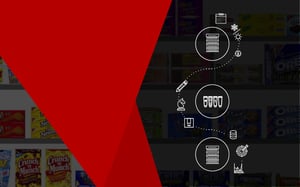There is no doubt that obsolete inventory is a real threat to your retail business. You only need to consider the consequences to know that. That said, there is also another fact to consider: you’re not immune to it. That’s especially true if your inventory forecasting isn’t up to standard as you’ll end up overstocking on products you don’t need.
In that case, you need to know how to manage your stock efficiently. After all, the last thing you want is to sit with inventory that you can’t sell.
What is obsolete inventory (and why does it happen)?
According to Investopedia, obsolete inventory is merchandise that has not sold for a long time, and there is no expectation that it will sell in the future. That’s why you’ll often hear it referred to as dead stock. Other terms used to describe it include dead inventory, excess inventory and aged stock.
Of course, the above only forms one part of its definition.
It’s also essential to point out that this excess stock is any inventory that has reached the end of its product lifecycle. As a result of not selling it, it becomes a burden to you since your capital is tied up in stock. There is also no chance of selling it at the price at which you initially listed it, which means you'll undoubtedly lose money. More than that, this stock occupies valuable shelf (and floor) space that would otherwise hold merchandise that sells.
Knowing that, you can immediately understand the problem that is dead stock and why you must identify it.
That said, you also need to understand the reasons why it happens.
For one, it can happen at the end of a season. For example, you sell sports equipment, and by the end of summer, you still have swimwear merchandise which has failed to sell. In this case, better inventory planning and a robust inventory management system can help you here so that you don’t have to continually place the stock in dump bins at a reduced price.
Another reason for it happening is as a result of deranging or discontinuing SKUs. For example, your supplier discontinues a product suddenly. In response, you might think you need to take the product off the planogram immediately. But that’s not true. In fact, we’d advise you against doing that.
If you take a discontinued product off your planogram, all you will end up doing is to ensure that you sit with excess stock in your storeroom. You’d be better off if you leave it on the shelf until you’re stocked out.
How can you identify obsolete inventory?
Now that we know what obsolete inventory is and what can cause it, it’s critical that you know how to identify it.
Fortunately, there are a few actions you can take to pinpoint this type of stock.
The first thing to do - a core point in managing your inventory - is to learn and understand your days of supply. That’s because your days of supply speaks directly to avoiding dead stock and helps you to guard against losing money. In DotActiv Enterprise, you can analyse your floor plan according to days of supply using our Highlight Spectrum to determine if it’s at an optimal level.
It’s also worth reading this piece around the different factors that influence your days of supply to help you ensure it remains ideal.
Other actions include setting up regular range reviews so that you can replace old merchandise with new stock. You can look at completing various shelf planning exercises, allocating shelf space according to the rate of sales. You can even make use of planograms to pinpoint any aged stock.
Just to note, when planograms are concerned, it’s advisable to use them in conjunction with a robust inventory management system to determine acceptable stock days cover, which you can then use as a benchmark to trigger the overstock button.
As a side note, it’s also worth mentioning that the time frame around determining when your stock becomes obsolete is entirely dependant on the retailer and the type of merchandise. That’s particularly true if you consider that you can sell stock seasonally or around a specific event.
For example, you’d have a limited period to sell Christmas decorations or Valentine’s Day items. In fact, even seasonal clothing has a specific period in which to sell before you need to replace it. Meanwhile, for another retailer selling different merchandise such as electronics or kitchenware, the time frame could be as long as 13 months.
How do you manage obsolete inventory?
If you have made the mistake of ordering too much stock or your stock hasn’t sold as expected, you shouldn’t just write it off as stock loss. Instead, you need to find a way to manage it. More importantly, you need to manage it appropriately so that it doesn’t become a burden to your business.
The best way to do that is to follow the proper product lifecycle. For that to happen, there is a concept known as product lifecycle management.
One of the measures to use in this instance is when you’re deranging or discontinuing an SKU, you must ensure that you no longer place any further orders for it. Of course, the product can stay on your planogram. In fact, it should remain. However, once you either decide to delist an SKU, or a supplier has discontinued it, you need to set up a trigger that will stop your replenishment engine from ordering more of that particular stock.
In DotActiv this is known as the ‘5-week rule’. In essence, the rule allows your stock to deplete naturally before removing it from your planogram altogether.
Once your stock levels are low enough, you can place the balance of those products in bulk stack displays. If executed correctly, it’ll help to increase foot traffic - visually appealing displays that promise savings will attract more shoppers - which leads to an increase in revenue.
Just to note, each product goes through a different lifecycle stage, and each will indicate how difficult the remedy will be if you have over ordered or your stock hasn’t sold out. For example, if your stock is in the Maturity lifecycle stage, you’d need to apply a different technique to get rid of it as opposed to merchandise that is part of the Growth stage.
Over and above following a product’s lifecycle, you can look to sell your stock at cost price. That includes using dump bins, sales displays and marking down your stock. As a side note, when marking down your inventory, you want to find the balance between getting rid of it and making as much money as you possibly can. Thus, while you can indeed sell your stock below cost price, it’s not advisable to go too low. For example, cost minus 40% would be extreme, but cost minus 10% might be just right.
You could also bundle different products together to get rid of them. If that’s not possible, you could negotiate a deal with your supplier to return the stock with minimum financial impact. That might mean offering to do a similar size order with them to compensate for returning the stock.
If all of the above fails, you might have to face the cold hard reality that is stock loss, writing it off and recording it in your books as an expense.


